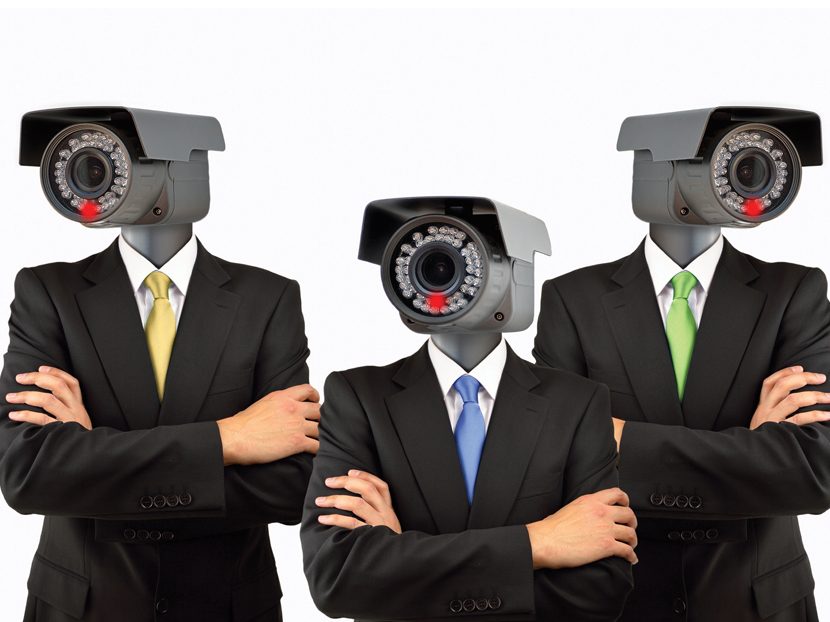The Dangers of Employee Monitoring
Do these systems build credibility with your team or send folks to greener pastures?

I was recently rolling through my LinkedIn feed and ran across an interesting post. The Economist posted a short video highlighting an article it published about employee monitoring and some of the innovative applications being deployed today.
As always, I perused the comments section to take the temperature of the online community. Reactions varied from cautious optimism to downright Orwellian fear of Big Brother. Being somewhere in the middle, I was more interested in the effect on leadership development and employee motivation. Does employee activity-monitoring make it more difficult to build relationships with the true frontline troops?
After viewing the post, I went on to seek out the article, “There will be little privacy in the workplace of the future,” posted on The Economist website. The article highlighted an organization named Humanyze, which is creating data-driven solutions to help managers understand workflow and create solutions to improve workplace productivity.
Essentially, the product will monitor communications with the outside world such as email, phone and text. Furthermore, with the device worn on the employee, the system can monitor activities such as time spent at the desk, moving around the office, interaction with other employees and even personal breaks. Although the system uses an anonymous identifier for individuals, some fear this data could be manipulated down to the individual.
There are several other examples of this type of monitoring emerging in the corporate world. Hitachi sells a product in Japan called a “happiness meter” to help combat the very real problem of employees working themselves to death. In one example, Hitachi found that morale went down when younger workers spent more than an hour in a meeting. (I can relate to that!)
A little closer to home, Amazon recently applied for two patents on a wrist band for warehouse workers. Again, the intent here is to monitor workflow so management can remove barriers to productivity.
Trust, Empowerment and Productivity
Today, many of my clients in the distribution industry use some form of employee monitoring, such as CCTV cameras placed in warehouse areas — a common type of observation used primarily to deter theft or other shenanigans. The most common method I notice is vehicle GPS monitoring.
Like any program of this nature, there are perceived positives and negatives. In a survey I conducted a couple of years ago, many pointed to the positive aspects of GPS monitoring such as better visibility to delivery times, reduced reckless driving habits and improved routing capability. On the negative side, driver morale waned and trust was diminished. One participant pointed out that customer service was challenged because drivers felt they needed to rush through their deliveries to get back on time.
As I have mentioned in the past, I am a product of Generation X. My generation, by in large, hates being micromanaged and monitored. I have a very difficult time trusting that employee monitoring systems are designed for the greater good.
Sure, I can see some potential benefits in the right situations. I like the customer service aspect of visibility to the delivery route. I like the opportunity to remove barriers in the workplace. These goals work in tandem with the servant-style leadership approach I follow. Unfortunately, I also can see these programs driving a wedge between employee and manager in the areas of trust, creativity and empowerment.
Communication and trust are the cornerstones of developing relationships with the employees we serve. Barriers to communication, such as detachment and a lack of active listening, will derail the mission of any organization.
As I look deeper at these monitoring programs, I see less eyeball-to-eyeball communication and more reliance on data and artificial intelligence. Leaders are no longer seeking solutions through meaningful communication with the team. Rather, they are relying on a very impersonal method of understanding their workforce. What happened to asking people to give you an opinion?
I’ve said this before: I believe the greatest untapped asset in our companies is the collective creativity of the people who work with us. As leaders, we must constantly strive to find ways to give our employees a way to contribute. They all come with life experiences and the ability to recognize inefficiency in our workplace. Perhaps they haven’t exercised those problem-solving muscles in a while, but they all have them. When team members believe management doesn’t trust them, all desire to contribute to the good of the organization goes out the window.
Trust and empowerment go hand in hand. Unfortunately, I believe some managers are a little confused about the dynamics of this relationship. If I trust employees to make good decisions, I will empower them to handle more situations.
While this certainly might be the case, I believe more powerful results occur when we turn this statement upside down. When employees trust their manager, the more confident they will become in their decision-making skills. As leaders and managers, we can provide all the tools necessary for a successful outcome. If our employees do not trust that we will support and encourage their direction, they will never be motivated to take responsibility for the outcome.
Please don’t walk away from this article thinking I am technology or data adverse. I am a self-professed data junkie. Gathering data to make positive improvements in the bottom line is one of the cornerstones of my practice.
For all that love of data, I have a greater love for developing people. While I can recognize that employee-monitoring data analysis can point out areas for greater human productivity, I never want it to encroach on the opportunity to develop the best team possible.
When evaluating systems such as this, ask yourself if they build credibility with your team or send folks to greener pastures. Good luck and I look forward to being of service in the future.





